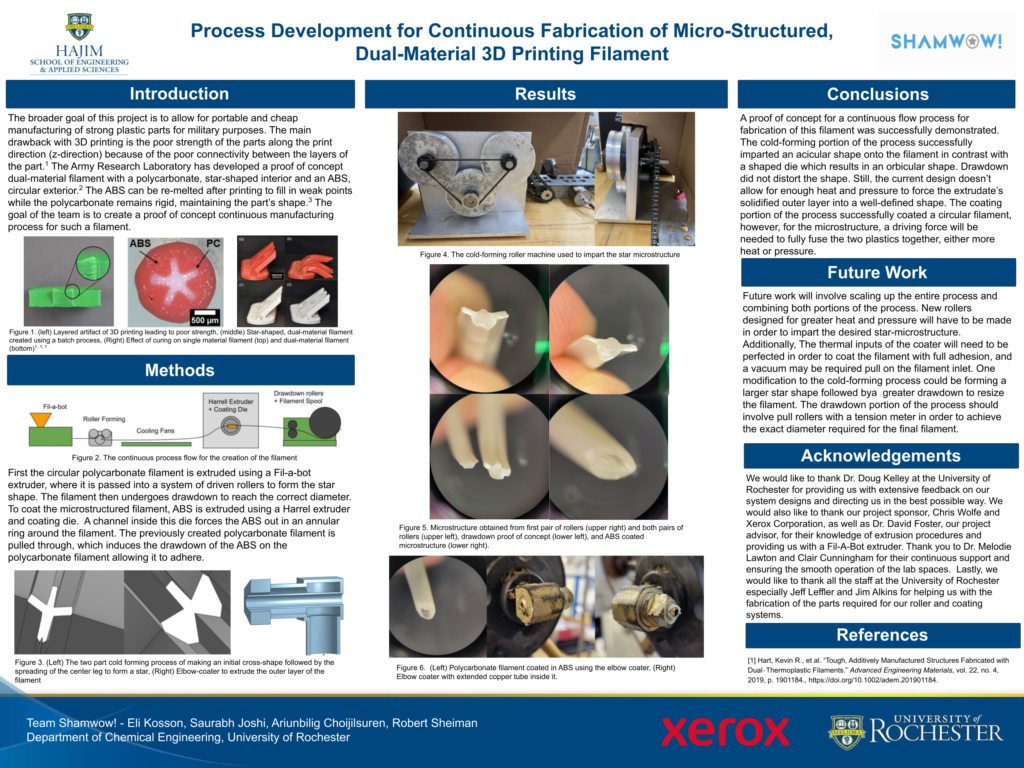Team
- Robert Sheiman
- Eli Kosson
- Ariunbilig Choijilsuren
- Saurabh Joshi
Mentors
Dave Foster and Doug Kelley
Abstract
The emergence of 3D printing as a means to quickly manufacture a complex object is quickly becoming one of the most widely used tools in manufacturing. However, one of the major drawbacks to this method of fabrication is that the product is much weaker than their injection molded counterparts due the layers of filament not fully adhering together. One method of increasing the strength of 3D printed parts is to introduce a curing step to allow the layers to fuse to each other; however, this process affects the geometry of the part as a whole due to melting. A method for counteracting this is to create a microstructured, dual-material filament that allows for this curing process without compromising the structural shape of the part. This is done by having a high Tg skeleton and to support a lower Tg continuous phase. A batch process for creating this filament has been created, however, a continuous manufacturing process will be required to scale-up the technology. This work done in this investigation resulted in a semi-continuous process for creating the complex filament. The two-phase fabrication starts by extruding polycarbonate into system of cold-forming rollers followed by the extrusion of ABS using an elbow-coater.

